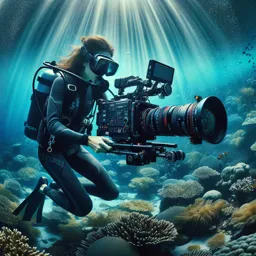Introduction to Advanced Drone Filmmaking
Drone filmmaking has quickly shifted from a niche skill to an essential tool for visual storytellers. While many have mastered the basic techniques of capturing sweeping landscapes and dramatic establishing shots, advanced drone filmmaking offers opportunities to create truly immersive and narrative-driven visual stories.
Understanding Movement and Composition
One of the most important aspects of drone filmmaking is movement. Unlike static cameras, drones can glide, swoop, and orbit around subjects, providing a dynamic perspective. Advanced filmmakers choreograph these movements to enhance the emotional impact of a scene. For instance, a slow rise from ground level to reveal a character’s surroundings can symbolize discovery or liberation.
Storyboarding for Aerial Perspectives
Storyboarding isn’t just for ground-based shots—it’s equally vital for aerial sequences. Before flying, map out your desired shots, noting how each drone movement matches narrative beats. This preparation helps you maximize limited drone battery time and ensures your aerial shots integrate seamlessly into your film’s overall story.
Dynamic Tracking and Subject Following
Modern drones come equipped with intelligent subject tracking modes. Advanced use involves anticipating your subject’s movement and pre-programming drone paths, rather than relying solely on automated modes. This hybrid approach delivers more cinematic and controlled shots, especially during action sequences or when following moving vehicles or actors.
Creative Uses of Height and Distance
Don’t just use altitude for scenery. Experiment with low-altitude shots to create a sense of intimacy, or fly close to obstacles to generate speed and excitement. Mixing wide, high-altitude shots with close, ground-hugging paths can dramatically boost the film’s visual interest and storytelling power.
Lighting and Time of Day
Mastering natural light is critical in drone filmmaking. The golden hour—shortly after sunrise or before sunset—offers soft, flattering light, while shooting at other times introduces different moods. Plan your flights according to the lighting effects needed for your scene, and always review weather conditions to ensure safety and shot quality.
Post-Production Magic
Advanced drone filmmaking doesn’t end with the flight. In post-production, use editing tools to stabilize footage, correct colors, and add motion effects. Cutting aerial shots creatively can help transition between scenes, establish geography, or intensify emotion.
Conclusion
By moving beyond basic aerial shots and embracing advanced drone filmmaking techniques, creators can craft visually captivating and emotionally resonant films. Mastering movement, composition, and post-production opens new storytelling horizons in the skies.





















